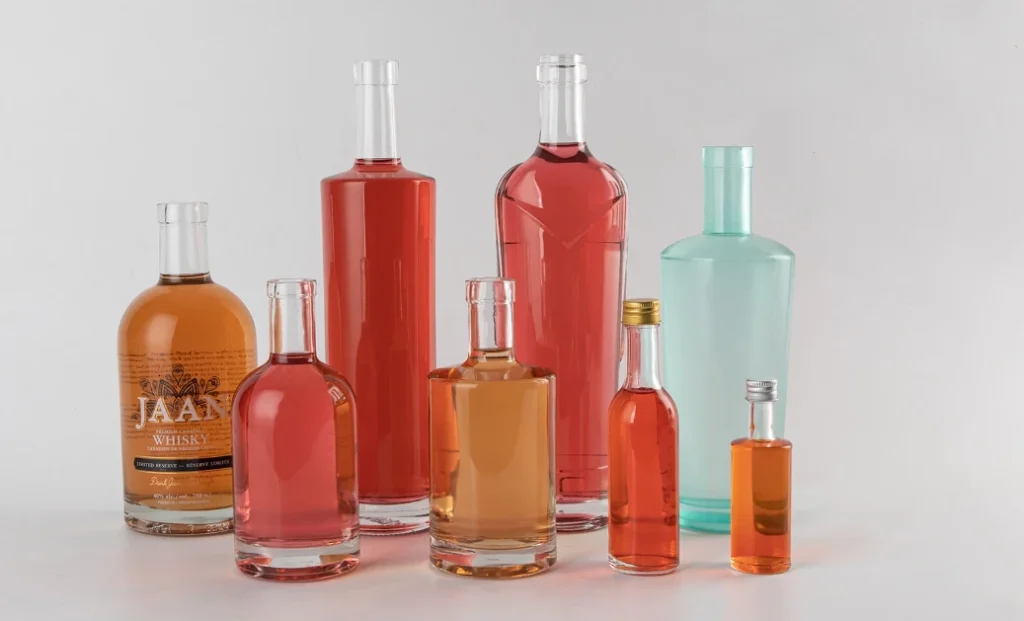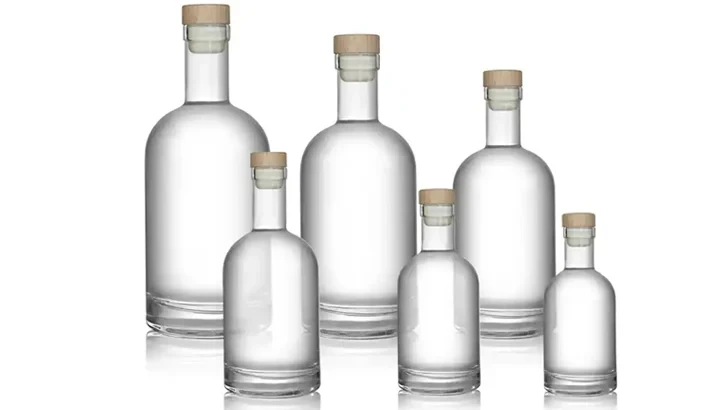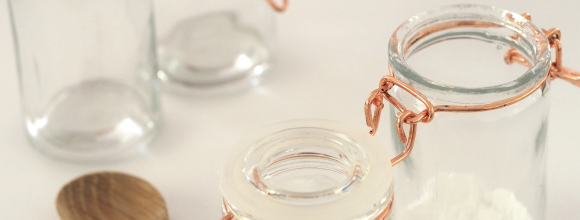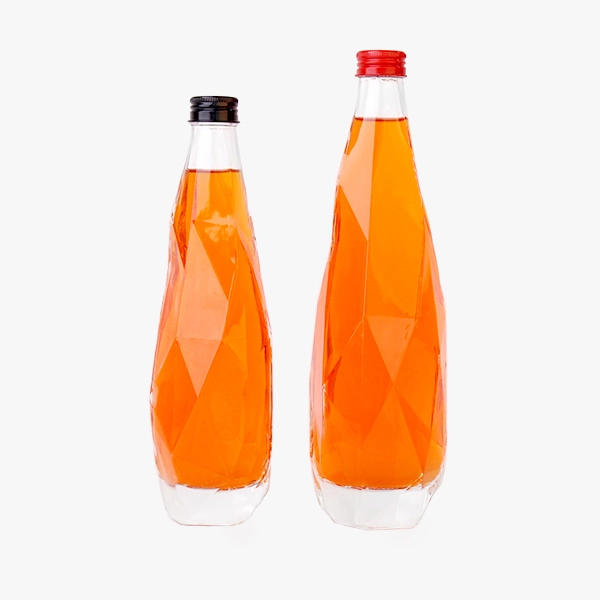The Ultimate Guide to Vodka Bottle Sizes and Heights for Businesses
Understanding vodka bottle sizes and heights is crucial for businesses in the alcohol industry. Distilleries need to know these details to plan production efficiently. Liquor stores must consider them for effective shelf organization and inventory management. Bars benefit by optimizing their space and ensuring they can serve their customers’ preferences. Each bottle size serves a specific purpose, affecting storage, marketing, and sales.
This guide will provide comprehensive insights into the various vodka bottle sizes and dimensions. Readers will learn about standard and specialty sizes, the typical heights of these bottles, and how these factors impact business operations.
Overview of Vodka Bottle Sizes
Vodka bottles come in various sizes to meet different needs. Standard sizes include the miniature (50ml), often used for samples or single servings and popular in hotels and as promotional items. The half pint (200ml) is convenient for personal use, travel, or small gatherings.
Pint-sized bottles (375ml) are ideal for individual consumption and small parties, offering enough volume without being overly bulky. The fifth (750ml) is the most popular size for retail sales, balancing quantity and convenience.
Regular consumers and bars prefer liter bottles (1L) for better value, while handles (1.75L) are economical for frequent use, making them popular in bars and large gatherings.
In addition to standard sizes, vodka comes in specialty sizes for unique occasions and marketing strategies. Magnums (1.5L) are often used for special events and celebrations, while double magnums (3L), known as Jeroboams, are used for large parties and promotions.
Even larger bottles, such as Rehoboams (4.5L) and sizes up to 30 liters, are mainly used for display and special occasions, often becoming collectible items. These specialty sizes add a sense of luxury and exclusivity to the brand’s offerings.

Detailed Analysis of Each Vodka Bottle Size
Understanding the different sizes of vodka bottles is essential for businesses to cater to various consumer needs and optimize their operations. Each bottle size serves specific purposes, from single servings and promotional uses to bulk purchases for large gatherings. Here’s a detailed analysis of each vodka bottle size:
Miniature (50ml)
Miniature bottles, holding 50 milliliters, are primarily used for sampling and promotional purposes. They are also common in hotels, airlines, and as part of gift sets. Their small size makes them easy to distribute and ideal for single servings. Businesses use them to introduce new products to consumers without requiring a full purchase.
Half Pint (200ml)
Half-pint bottles containing 200 milliliters are convenient for personal use and travel. This size offers more than a single serving but remains portable. It’s suitable for short trips and small gatherings. Businesses often stock this size for consumers looking for a manageable amount without committing to a larger bottle.
Pint (375ml)
Pint-sized bottles, which hold 375 milliliters, are popular among individuals and small parties. They balance quantity and convenience, making them ideal for personal consumption. This size is also favored by consumers who want enough vodka for several drinks without the bulk of larger bottles.
Fifth (750ml)
The fifth, containing 750 milliliters, is the most common vodka bottle size. It is widely available in liquor stores and bars. This size is popular due to its practicality; it offers a substantial amount of vodka without being overly large. It is suitable for various occasions, from casual drinks at home to social gatherings.
Liter (1L)
Regular consumers and establishments prefer one-liter bottles. They offer more value per milliliter compared to smaller sizes. Bars and restaurants often use liter bottles to reduce the restocking frequency and provide better pricing for their customers. This size balances quantity and convenience for both businesses and consumers.
Handle (1.75L)
Handles holding 1.75 liters are economical for frequent use. They are popular in bars and for large gatherings due to their cost-effectiveness. Businesses benefit from the reduced cost per milliliter and the convenience of fewer bottle changes. Handles are ideal for high-volume use and are a staple in many commercial settings.
Larger Sizes (Magnum and Beyond)
Larger bottles, such as magnums (1.5L) and double magnums (3L), are used for special events and marketing. These sizes add a sense of luxury and celebration. They are often seen at parties, weddings, and promotional events. The larger formats, including sizes up to 30 liters, are rare and usually serve as collectible items or display pieces. They are used to make a statement and attract attention.
Height and Dimensions of Vodka Bottles
Vodka bottles vary in height depending on their size and design. Here’s a breakdown of average heights for standard bottle sizes:
- Miniature (50ml): Approximately 4 inches tall. These small bottles are compact and easy to store, perfect for sample distributions and gift sets.
- Half Pint (200ml): Around 6-7 inches in height. This size is easy to carry and perfect for travel.
- Pint (375ml): Typically 9-10 inches tall. Pints offer a moderate amount of vodka and are suitable for individual use.
- Fifth (750ml): Generally 12-13 inches tall. The fifth is the standard size for retail and is widely used in liquor stores and bars.
- Liter (1L): About 12-13 inches in height, similar to the fifth but slightly broader. This size is famous for its value and convenience.
- Handle (1.75L): Usually 14-15 inches tall. Handles are large, offering a lot of vodka, ideal for bars and large gatherings.

Comparison with Other Liquor Bottles
When comparing vodka bottles to other types of liquor bottles, such as wine and whiskey, there are notable differences and similarities:
- Wine Bottles: A standard wine bottle holds 750ml and is approximately 11.5-12 inches tall. This is similar in height to a fifth of vodka but often has a different shape, being more slender and with a longer neck.
- Whiskey Bottles: Whiskey bottles also come in various sizes, with the 750ml bottle being around 12-13 inches tall. Whiskey bottles tend to be more robust and square than cylindrical vodka bottles.
- Other Spirits: Bottles for spirits like rum and gin usually follow similar size conventions, with the 750ml bottle being about 12 inches tall.
Impact on Shelf Space and Storage
The height and dimensions of vodka bottles play a crucial role in shelf space and storage considerations for businesses:
- Shelf Space: Retailers need to organize their shelves efficiently to display a variety of bottle sizes. Taller bottles like handles (1.75L) require more vertical space, whereas smaller bottles like miniatures (50ml) can be placed in compact areas.
- Storage: Bars and restaurants must optimize storage to access different bottle sizes easily. Handles and larger bottles are often stored on lower shelves or dedicated storage areas to manage their bulk.
- Aesthetics: The height and shape of the bottles also contribute to the display’s visual appeal. Uniform heights can create a clean look while varying heights can add visual interest and draw attention to specific products.
Regulatory Standards and Labeling Requirements
Vodka bottle sizes and labeling are regulated to ensure consumer safety and market fairness. In the United States, the Alcohol and Tobacco Tax and Trade Bureau (TTB) sets standards for bottle sizes, including 750ml, 1L, and 1.75L bottles.
These regulations maintain consistency and transparency in the market. Similarly, the European Union standardizes bottle sizes to ensure safety and quality, making it easier for consumers to understand their purchases across different brands and countries.
Vodka bottle labels must include specific information to comply with regulatory standards:
- Volume: Expressed in milliliters (ml) or liters (L).
- Alcohol Content: Percentage of alcohol by volume (ABV).
- Producer Information: Manufacturer’s name and address.
- Health Warnings: Notices about alcohol consumption risks.
- Country of Origin: Indicating where the vodka was produced.
Labeling requirements can vary internationally. For example, Canada requires bilingual labels in English and French. Australia includes a standard drinks calculation to inform consumers about alcohol content. Japan has additional health and safety labeling requirements.
These variations ensure compliance with local regulations while maintaining global consistency, aiding brands in international marketing.
Adhering to regulatory standards is crucial for businesses. Non-compliance can result in legal issues, fines, and damage to reputation. By following these regulations, businesses ensure their products are market-ready and legally compliant, avoiding disruptions.
Economic and Practical Considerations
When selecting vodka bottle sizes, cost efficiency is vital. Larger bottles, such as liters and handles (1.75L), provide better value per milliliter due to economies of scale in production and packaging. Bulk buying reduces unit costs, making these sizes more economical for retailers and consumers.
Smaller bottles like miniatures (50ml) and half pints (200ml) have higher production costs per milliliter but serve specific purposes such as samples, promotions, and travel-friendly options, justifying their higher price points in particular contexts.
Bottle size and design significantly influence branding and marketing strategies. Unique, visually appealing designs enhance brand perception and attract customers. Specialty sizes and limited-edition bottles create buzz and exclusivity. Larger bottles like magnums and double magnums are ideal for promotional events and symbolize generosity and luxury.
Efficient inventory management ensures businesses meet customer demand without overstocking. Monitoring sales patterns helps maintain optimal inventory levels. Bars and restaurants might stock more handles for high-demand periods, while retail stores balance their stock with various sizes to cater to diverse preferences.
Different consumer segments prefer different bottle sizes. Casual drinkers opt for fifths (750ml) or liters (1L) for regular use, while connoisseurs and collectors seek specialty sizes for their unique appeal. Aligning product offerings with consumer preferences enhances customer satisfaction and drives sales.

Sustainability and Recycling
Sustainability is a critical factor in the spirits industry, driven by increasing environmental awareness. Companies are shifting towards sustainable packaging to minimize their environmental impact. Refillable bottles and recyclable materials are becoming more popular, aligning with consumer demand for sustainable products. Larger bottles, like the 1.75L size, contribute to sustainability by reducing packaging waste per milliliter of vodka.
Efficient storage solutions are essential for handling various bottle sizes. Businesses must consider the space required and ease of access for staff. Shelving units should accommodate different bottle dimensions, ensuring organization and accessibility. Bars and restaurants benefit from dedicated storage for high-demand sizes like liters and handles, streamlining operations and improving service speed. Retail stores can enhance the shopping experience by strategically displaying popular and specialty sizes.
Adopting sustainable practices offers several benefits. Reducing waste and using recycled materials can lower production costs and disposal fees. Focusing on sustainability boosts brand reputation and attracts environmentally conscious consumers. Proactively adhering to environmental regulations ensures compliance, avoids penalties, and meets stricter standards. Effective recycling programs, consumer education, partnerships with recyclers, and sustainable design maximize these benefits and promote proper processing and reuse of materials.
Choosing the Right Bottle Size for Your Business
Choosing the right vodka bottle size is crucial for meeting customer needs and optimizing business operations.
- Target Audience: Different segments prefer different sizes. Casual drinkers opt for standard sizes (750ml, 1L). Bars and restaurants favor handles (1.75L). Gift buyers and occasional drinkers prefer miniatures (50ml) and pints (375ml). Collectors are drawn to specialty and limited-edition bottles.
- Inventory Management: Ensure you meet demand without overstocking. Regularly monitor sales data. Adjust stocking levels based on popular sizes. Consider seasonal trends like increased holiday demand. Optimize storage solutions for various bottle sizes.
- Event Planning: Enhance event experiences with appropriate sizes. Large gatherings benefit from magnums (1.5L) and handles (1.75L). Corporate events and promotions suit miniatures and pints. Specialty sizes add aesthetic value to themed parties.
- Marketing Strategies: Leverage different sizes to attract customers. Offer discounts on larger bottles to encourage bulk purchases. Release limited-edition bottles to create buzz and attract collectors. Use educational campaigns to inform consumers about the benefits of various sizes via social media and in-store promotions.
Future Trends in Vodka Bottle Packaging
Vodka bottle packaging is rapidly evolving to meet consumer preferences and industry trends. Innovations in design, sustainability, and technology are reshaping how brands present their products.
Brands focus on unique shapes and artistic designs to stand out. Absolut Vodka releases limited-edition bottles that become collector’s items. Functional enhancements like ergonomic shapes and integrated spouts improve user experience. Advances in production technology allow for greater customization, enabling bespoke designs for special editions or promotional campaigns.
Modern consumers value sustainable and innovative packaging. Brands use recycled glass, biodegradable labels, and eco-friendly inks to appeal to eco-conscious buyers. There is a trend towards minimalist designs that emphasize simplicity and health. Personalized packaging, such as engraved bottles, strengthens the consumer-brand connection.
Technological advancements drive innovation in vodka bottle packaging. Innovative packaging with QR codes and NFC chips provides additional product information and engagement. Lightweight bottles reduce shipping costs and environmental impact. Advanced printing techniques create detailed, vibrant designs that enhance brand image.
The vodka industry is shifting towards premiumization and diversification. Consumers are willing to pay more for high-quality, well-packaged products. The market for flavored vodkas is expanding, with packaging highlighting flavor profiles. Limited edition bottles and collaborations with artists or celebrities create urgency and desirability, encouraging purchases as collectibles.
Conclusion
Understanding vodka bottle sizes and heights is essential for optimizing production, marketing, and inventory management in the alcohol industry. Different bottle sizes cater to various consumer needs, from casual drinkers to collectors, and knowing these preferences can significantly enhance business operations.
Staying informed about regulatory standards and sustainability trends ensures compliance and appeals to eco-conscious consumers. By innovative designs and technological advancements, businesses can remain competitive and meet evolving market demand.




